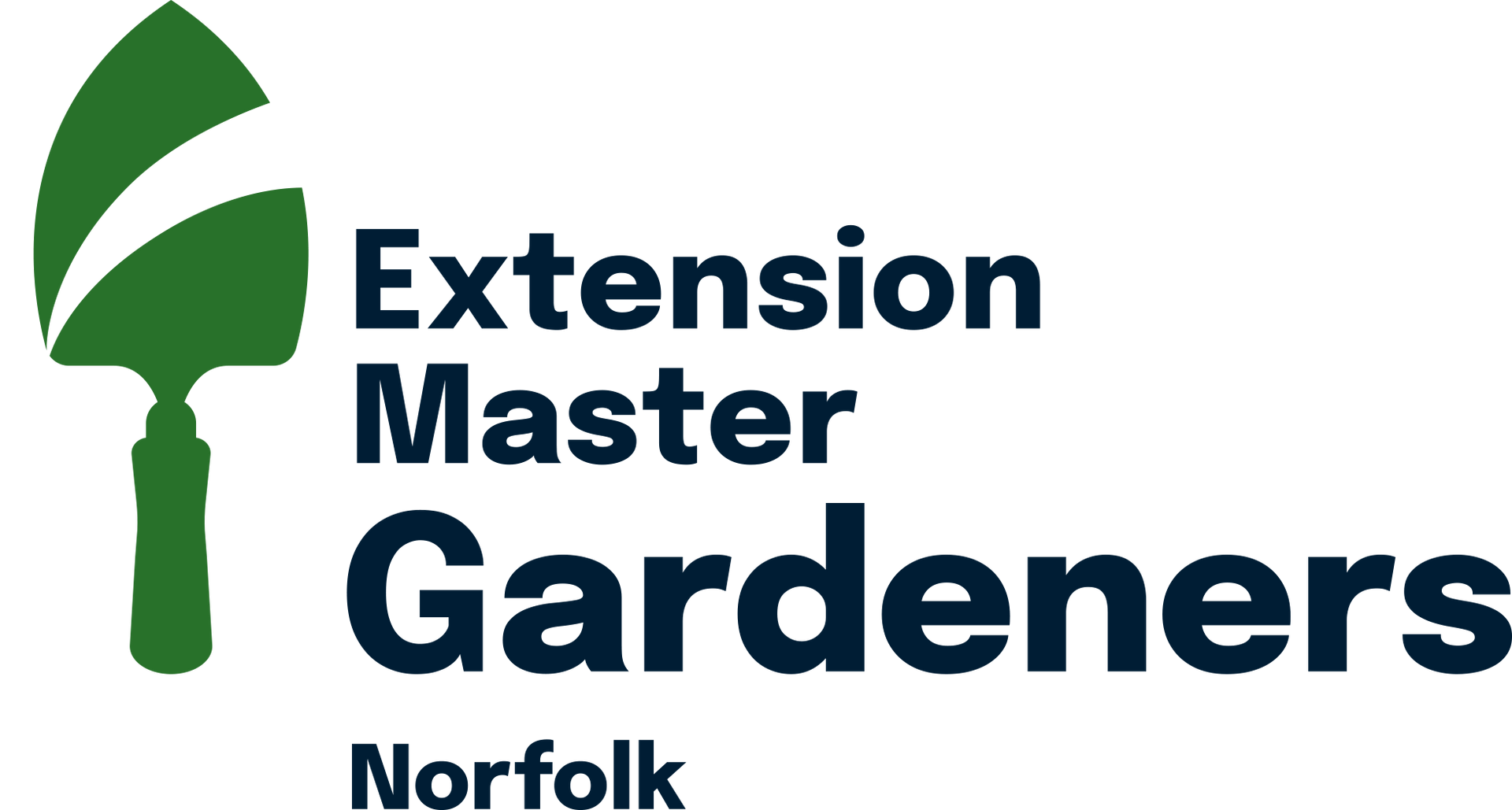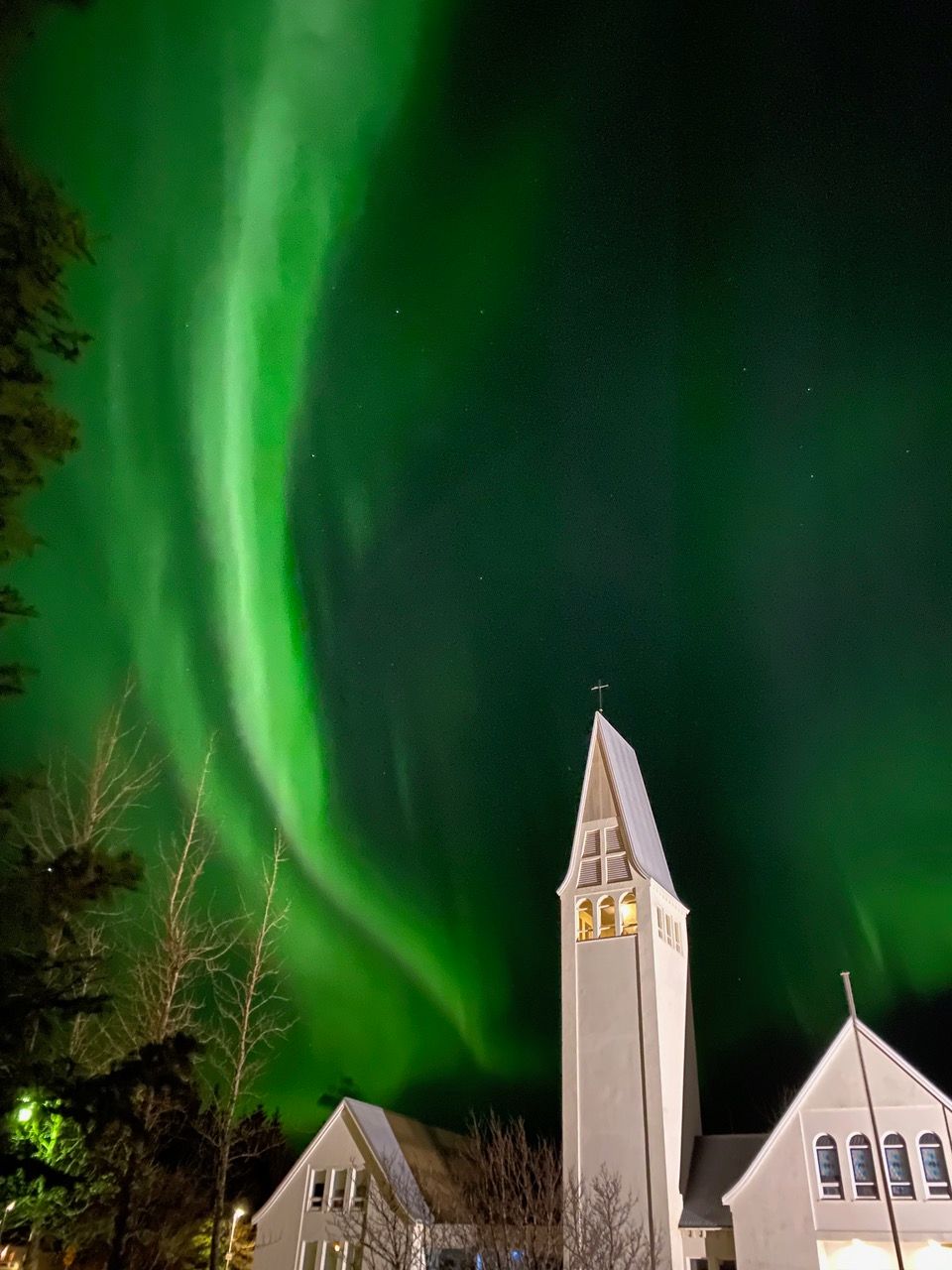Norfolk Master Gardeners
830 Southampton Ave., Ste 2069
Norfolk, Virginia 23510-1045
The Germinator Blog
The Germinator Blog
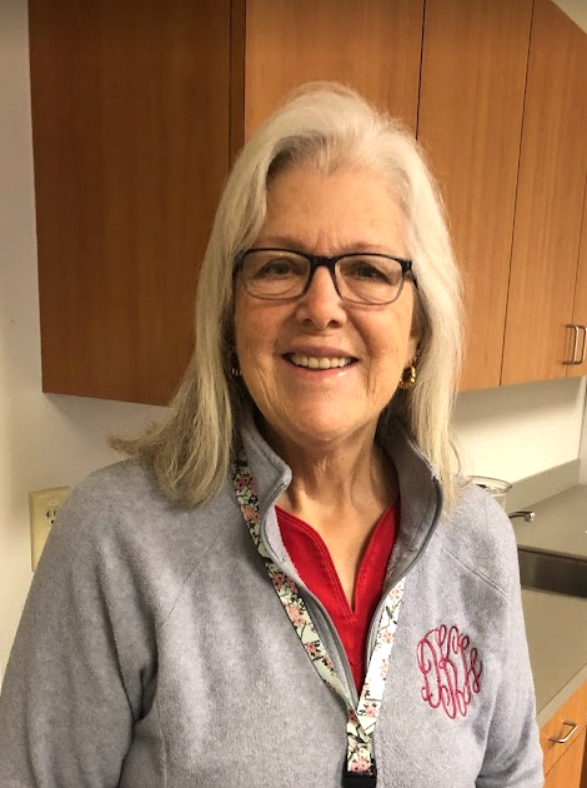
By Eileen Ballance – ‘15
•
08 Apr, 2024
Dianne was born and grew up in Norfolk and lived here 53 years. She moved to Suffolk for thirteen years and moved back to Norfolk in 2018. Dianne and both of her children graduated from Granby High School. She moved back to Norfolk when her husband passed away so she could be closer to her family. Dianne retired from Virginia Beach Public Schools after 39 years. She wanted to become a master gardener because she built a new house and wanted to create gardens of her choice. She researched and read how to create the massive Best Management Practices (BMPs) in her front yard to comply with the city’s requirement to handle stormwater runoff. She wanted to learn what, where and why she was planting things. In order to earn her fifty required hours she consistently worked with the Demonstration Dune Gardens. She also worked with some of the outreach projects and resiliency groups, as well as Ask a Master Gardener. Now that she is certified she will continue working with the Dune Gardens and community outreach. When Dianne is not volunteering with Master Gardener projects she will be working in her yard or her son’s yard. She landscaped her front and half of her side yard; this year she’s designing and beginning the landscape in the back yard. Dianne has two children (Nate and Jackie) and is blessed with 8 grandchildren ranging in age from 2-16, six boys and two girls. When you see Dianne, be sure to introduce yourself and welcome her to the Norfolk Master Gardener Volunteers.
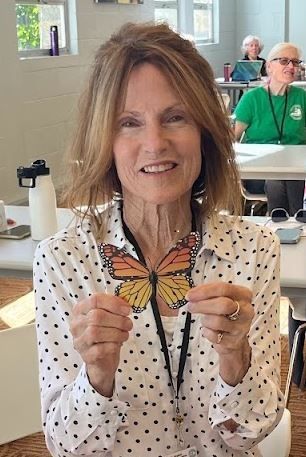
By Eileen Ballance '15
•
07 Mar, 2024
Anne is a Norfolk native. She graduated from Maury High School and then went to William & Mary where she received her Bachelor of Arts degree. She started out as a health/physical education teacher but spent most of her career teaching math. She retired from Norfolk Collegiate after 42 years. Anne’s mother was an avid gardener as well as her maternal grandmother. Her great-great-grandmother was one of the first women to own a greenhouse. Anne has always loved plants and gardening and this was one reason she pursued the Master Gardener Training Program. She wanted to learn more about plants, shrubs, trees, and to be able to help family members, neighbors and people in the community when they had questions. She will always be appreciative of Kim Stewart for all their many gardening talks and her constant encouragement to sign up for the Master Gardeners program. She loved the classes, especially the hands-on activities. She feels that the entire program taught her so much about the many aspects of gardening and has encouraged her to learn more. The master gardeners that she has met are unique individuals, and so knowledgeable and a joy to be around. To attain her fifty hours Anne worked on the Plant Sale, in the Butterfly House and Potager Garden at the Norfolk Botanical Garden. Now that she has received her certification she plans to continue working with the plant sale and be more involved at the Potager Garden. She is interested in the Fred Heutte Square Foot Garden as well as the Native Plant and Pollinator Garden. She would also like to train and learn about the greenhouse so that she will be able to help once that project is up and running. Anne still plans to work in the Butterfly House at the Norfolk Botanical Garden and continue to be involved in more community outreach activities. Anne works two part-time jobs, one as a math tutor and the other as a standardized patient for EVMS. When she is not participating in Norfolk Master Gardener activities she enjoys volunteering, attending church, working in the yard, working out/yoga/walking but more of all spending time with her family and friends. Anne’s family consists of three children, a son and daughter-in-law, a 10-month old grandson with two more grandchildren on the way. She also has two cockapoos, Sam and Teddy. When you see Anne be sure to introduce yourself and welcome her to the Norfolk Extension Master Gardeners.

By Kate Melhuish '04
•
31 Jan, 2024
Many Norfolk Master Gardeners know that the Elizabeth River Project has been much in the news lately. They’ve moved into their new headquarters on Colley Ave, the Ryan Resilience Lab, an amazing building designed with the latest green technologies. There are solar panels, a rain garden, cisterns that capture rainwater to reuse in the toilets, pavers in the parking lot that allow water to filter underground – even the carpeting is made from fishnets recycled from the ocean. The accessible walkway that leads into the building doubles as a floating dock that rises with flooding. The ERP also made headlines recently for signing the first “rolling conservation easement” that will cause the new building to be demolished when sea level rise eventually swamps the site on Knitting Mill Creek. On the evening of January 27 the ERP staff opened up the Ryan Resilience Lab to celebrate the many volunteers that work with them to reverse pollution in the Elizabeth River. They do a lot of education through the Learning Barge, Paradise Creek Nature Park in Portsmouth, and Princess Elizabeth, played by storyteller Robin Dunbar. They also do critical work with local businesses, governments, students, and community members to restore the health of the river. So when they let us know that Norfolk Master Gardeners have been named their “Club Volunteers of the Year,” some of the NMGs who have joined in their many projects came out for the event.

By Caleb Malcom ‘23
•
29 Jan, 2024
I have been obsessed with plants since I could articulate full sentences. Throughout my life, I have also sought out many sources of knowledge and experiences. On top of all that I’ve done more experiments with plants than I can remember. This includes trying to sprout almost every seed available to me. Due to this, I’ve heard my whole life “You shouldn’t sprout seeds from (insert plant name here) because it won’t be the same.” My response was always “And what’s wrong with that?” Humans are often funny creatures. We find something we like, and we don’t want it to change. With food diversity this is problematic. I’ll provide a quote from the article Edible Extinction: Why We Need to Revive Global Food Diversity: “In the United States, at the beginning of the 20th century, farmers grew thousands of different locally adapted varieties of corn. By the early 1970s a small number of hybrids dominated, and all were later found to be susceptible to a disease called leaf blight.” (Saladino, 2022) The entire article has multiple examples but this one is relevant to our own country. How did all those varieties occur? By people saving seeds from plants that they enjoyed and did best for them. But there are problems with this in our modern world and it started in 1980. Supreme Court case Diamond v. Chakrabarty (1980) paved the way for the patenting of organisms. This allowed for the Supreme Court case Bowman v. Monsanto Company (2013) which prohibits farmers from saving seeds from patented seeds. Admittedly, this paragraph discourages saving your own seeds. Sadly, I have one more paragraph of doom and gloom. According to the Food and Agriculture Organization of the United Nations, we have lost 75% of our agrobiodiversity since 1900 (FAO 2004). This push towards a monoculture is already leading to so many problems. So how can seed saving help with this? Start by using non-patented plant varieties. Then learn how to save your seeds. Tomatoes, peppers, okra, eggplant, amaranth, squash, and so many others are easy. Just let your fruits and vegetables ripen, then save your seeds after cleaning them if needed. For things like cucumber the seeds need to be fermented, or if you’re lazy like me I just let the ripe cucumbers rot and ferment then wash off all the pulp. There is so much research and help out there on how to save seeds that is literally at your fingertips. Now you’ve learned to save your seeds. How can you help with diversity? One way is to create your own hybrids. Plant several varieties of something and when they are flowering get out there with a tiny paintbrush and cross-pollinate those flowers. Now, you’ll have to wait and see. Save those seeds and plant them next year and see what you and nature have provided. Maybe the changes are small, maybe they are huge, but you’ll never know until you try. Another method is simply selection. Maybe you have one plant that produces better food. Well, save seed from it. Diseases are rampant among plants in our gardens but you may see a plant that isn’t affected or is resistant. Save seeds from them. If you get an unusually shaped fruit or vegetable and you like it, save seeds and see if you can grow more. Are either of the methods mentioned above fast? No. Can they be enjoyable and fulfilling? Yes, very much so. With each set of saved seeds, you tap into something that humans have been doing for 12,000 years or more. You are sharing in cultural practices that span time and the continents. Each tiny step you take is a small step towards diversity. If you go down this route there is one more thing I encourage. That is to gift and share your varieties. Share seeds with your friends, your communities, and your neighbors. Encourage those that you share with to save seeds. I’ll end this with a recent anecdote from my life. I am working on a corn variety that will hopefully grow well in smaller plots in urban and suburban areas. I selected a few varieties and then a friend who grew up in the same town as I shared another variety with me that I added to my plantings. I’m still in the very early stages of this but as I was setting kernels aside to save for my planting this year, I set some aside for him as well. I mailed him a package and he contacted me. I sent him enough seeds that not only is he going to plant them, but he is sharing them with other friends of his who plan on mixing them in with their plantings. I believe that this should be a culture where seeds are concerned. I hope I’ve convinced you too. References Bowman v. Monsanto. (n.d.). Oyez. Retrieved January 26, 2024, from https://www.oyez.org/cases/2012/11-796 Diamond v. Chakrabarty, 447 U.S. 303 (1980). (n.d.). Justia Law. Retrieved January 26, 2024, from https://supreme.justia.com/cases/federal/us/447/303/ Saladino, D. (2022, March 1). Edible Extinction: Why We Need to Revive Global Food Diversity. Yale E360. https://e360.yale.edu/features/a-look-inside-the-global-movement-to-revive-food-diversity FAO (2004) What is Agrobiodiversity? (n.d.). Food and Agriculture Organization of The United Nations. Retrieved January 26, 2024, from https://www.fao.org/3/y5609e/y5609e02.htm
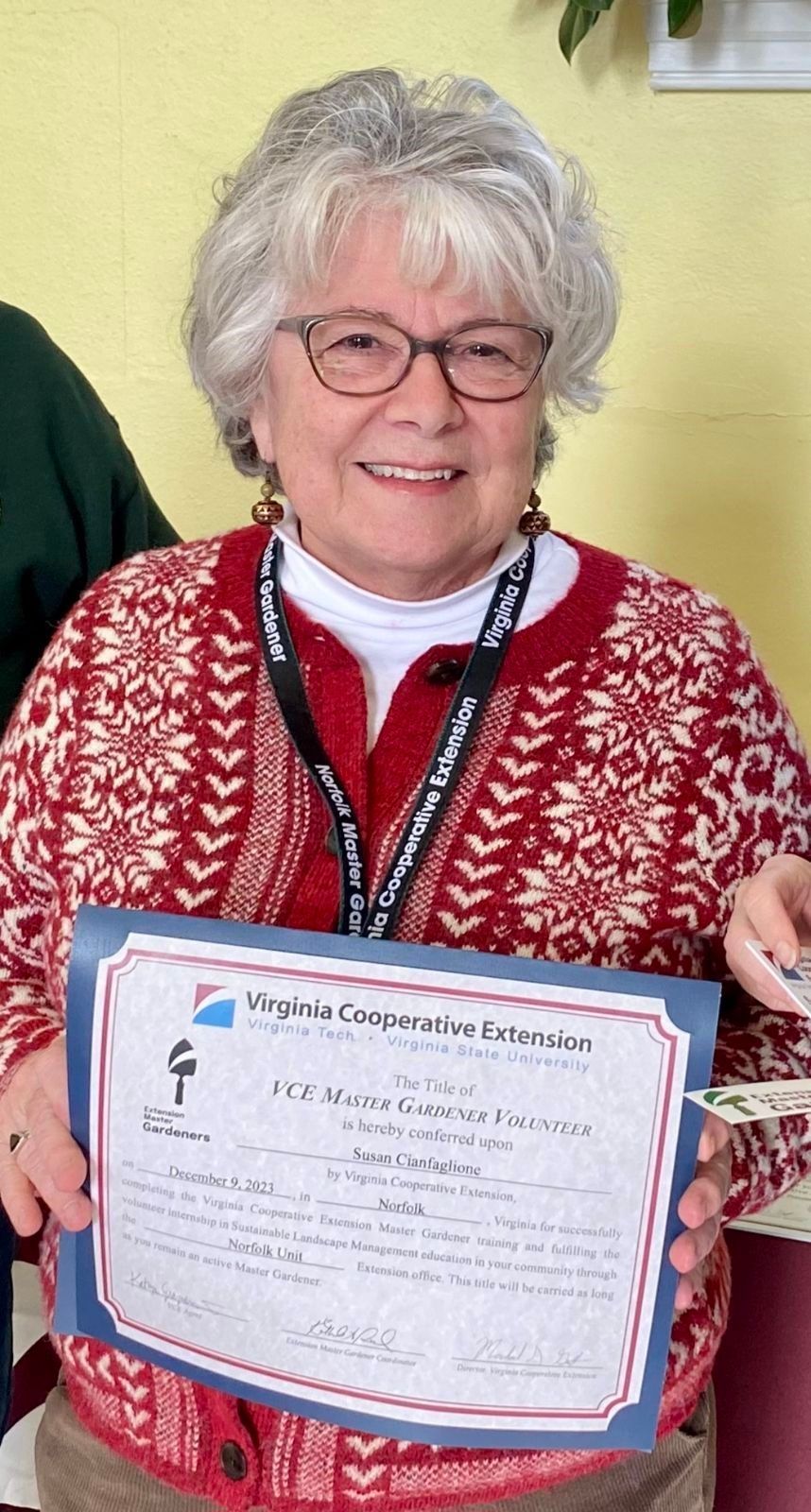
By Eileen Ballance – ‘15
•
21 Jan, 2024
Susan was born and grew up in Lake County, Ohio. She attended high school at Villa Angela Academy in Cleveland, and Mentor High School in Mentor, Ohio. She was the second of six children and all work in family gardens and family businesses. Her youngest sister raises chickens, beef and bees. She sells vegetables, honey and eggs at a farm market. Her 97-year-old father lives on the historic 150-acre family farm and still grows plants from seeds in his greenhouse. Susan’s post-secondary education was received at Miami University, Oxford, Ohio; University of Michigan, Ann Arbor, Michigan; Kent State University, Kent, Ohio; and George Washington University, Washington, DC. She lived and worked in Michigan for more than thirty years in public education and Adjunct Instructor at Albion College, and was also a marketing and retail business owner. Susan came to Norfolk in 2005 when she accepted a position with the Department of Aging and Rehabilitative Services as a Certified Vocational Evaluator, and retired in 2018. When asked what made her want to become a Master Gardener, Susan said she has always loved growing vegetables, flowers and herbs. This led her to take a Botany class in college. She wanted to learn more about fertilizers, pesticides and grass seed. She is currently working at Taylor’s Do it Center and it was there that she met Tom West and Kim Stewart who encouraged her to join the Norfolk Master Gardener Class of 2023. Susan felt that the MG classes were “top-notch”! She particularly enjoyed the presentation on herbs. She likes to grow and cook with herbs. Susan worked on a variety of projects to attain her fifty hours including the Weyanoke Bird and Wildlife Sanctuary, Fred Heutte Square Foot Garden, Dig and Divides for the Plant Sale, Lafayette Wetlands Partnership work, and served on the Hospitality Committee. Now that she has attained her certification she plans to continue working at the Fred Heutte Square Foot Garden, Weyanoke Bird and Wildlife Sanctuary and the Eco Garden. When she isn’t working on MG projects Susan enjoys cooking, music and sewing costumes for theater productions. Susan has two daughters, Jennifer and Lesley, and one grandson named Cory. She shares her home with her 7-year-old AKC Shetland Sheepdog, Cody. When you see Susan, be sure to introduce yourself and welcome her to Norfolk Extension Master Gardeners.

By Eileen Ballance '15
•
15 Jan, 2024
Charlotte was born in Chicago, Illinois but when she was three months old her family moved to Alabama where she grew up. She came to Norfolk when she was transferred here by the U. S. Coast Guard. Charlotte graduated from the University of Alaska with a degree in Accounting. Charlotte retired from the U. S. Coast Guard after more than 32 years. She worked as a Marine Casualty Investigator and Inspector and International Port Security Assessor and trainer. Charlotte loves being outdoors and has an interest in being self-sufficient and this piqued her interest in becoming a master gardener. Charlotte enjoyed the classes. She especially liked the different places that the class visited. Charlotte worked on a variety of projects to attain her fifty hours including the Zoo Cart, Native Plant and Pollinator Garden at Fred Heutte Center, the Brock Cancer Center, and the garden at Ingleside Elementary School. She also worked at the Plant Sale, Tree Adoption and seed packaging. Now that she has attained her certification she plans to continue working at the projects she participated in as an intern. Charlotte has three children: Megan (Michael), Melissa and Patrick (Jordan) and two fabulous granddaughters, Violet and Verity. She also has a 7-year-old rescue dog named Toby. When Charlotte isn’t doing Master Gardener activities she enjoys golf, woodworking, camping and motorcycling. When you see Charlotte, be sure to introduce yourself and welcome her to Norfolk Extension Master Gardeners.
By Will Redfern, Class of 2018
•
20 Dec, 2023
Thank Yous, Congratulations and Happy Holidays
Are you ready to become an author?
Send your article to the editorial board for the Germinator Blog.
(attach the article in .docx format and any image files)
Instructions to submit an article

Report a website problem to:

